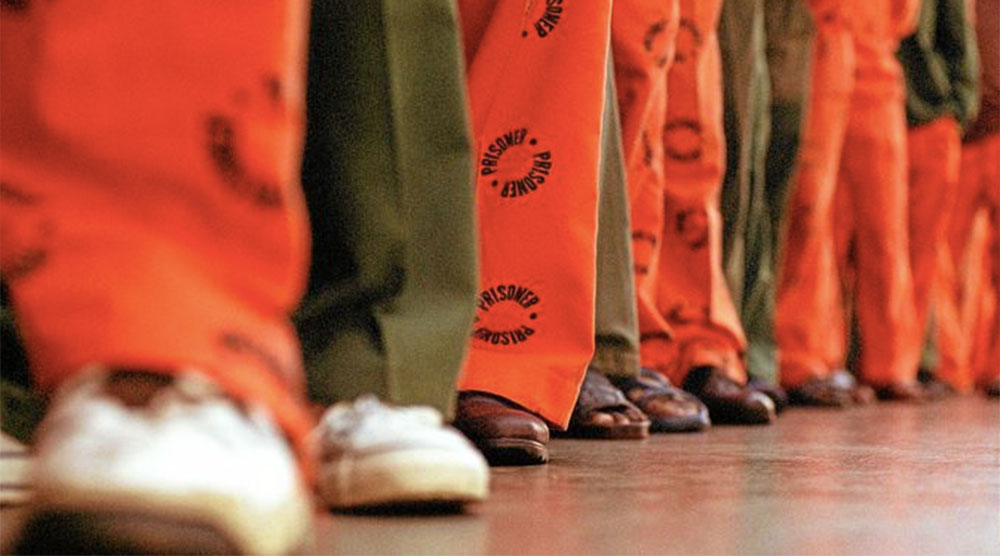Many of South Africa’s correctional facilities, and most acutely its remand detention facilities, are overcrowded, creating dehumanising and dangerous conditions.
Detainees are frequently compelled to remain in their cells for up to 23 hours a day. There are even incidences of detainees being permitted to exercise for only one hour in an entire month. Overcrowding, poorly trained employees and severe staff shortages render detainees vulnerable to abuse, violence, disease and physical and psychological illness.
Tuberculosis (TB) is more common among people living in overcrowded, badly ventilated conditions than those who live in well-ventilated facilities with fewer people in them.
Remand detainees are compelled to spend months, sometimes years, idle and frustrated, awaiting their day in court. Such circumstances are linked to increased incidences of violent behaviour, including sexual assault and rape, which in turn lead to an increase in the rate of HIV transmission. Correctional centres are considered high-risk environments for the spread of HIV.
In an Africa Check article published in December last year, the department of correctional services said of the 107 415 inmates willing to be tested for HIV in 2013-2014, 6.35% tested positive. This figure doesn’t include inmates who tested HIV positive in previous years.
But the HIV prevalence is likely to be far higher – a study published in 2014 in the PloS ONE journal for instance found a 25.3% HIV prevalence rate (the percentage of a population that tests HIV positive at a given time) at the Johannesburg Correctional Centre. HIV is a significant risk factor for TB. Unsurprisingly, the study found that 44.1% of inmates with undiagnosed TB were also HIV positive.
Conditions spread disease
Overcrowded correctional centres render the provision of adequate health services more costly and prone to inefficiencies and reduce the quality of ventilation, lighting and sanitation for detainees, which fuel the spread of disease. A University of Cape Town study published in 2011 in the South African Medical Journal found the practice of locking up remand detainees for 23 hours a day in overcrowded, poorly ventilated conditions creates severe transmission risks: someone detained in such conditions for one year has a 90% chance of contracting TB.
Awaiting-trial detainees have not been convicted of any crime and, according to an Open Society Foundation for South Africa report, almost half of such cases are likely to be withdrawn and not go to trial. In a white paper, the department of correctional services acknowledges “remand detainees are presumed innocent and must … be given access to amenities which they would have had if they were not been detained”.
Despite this, remand detainees often suffer harsher conditions than most of the sentenced inmates. Remand centres lack adequate ablution facilities and toilets, and fear and danger abound.
In emails to Sonke Gender Justice, the correctional services department has confirmed, since 2009, that there were 10 suicides at Pollsmoor – eight by detainees in the remand facilities. On May 4, the Pollsmoor Remand Centre was at 291.5% capacity: nearly three times its “approved maximum capacity”.
Department not doing enough
Despite these problems plaguing correctional centres, the department is failing to address severe shortages.
The human toll of living in these conditions is difficult to comprehend. One remand detainee we spoke to said: “There are a lot of sick people inside the cell. We all have bites from lice … I feel sick and stressed all the time.” Another told us: “I had many extremely itchy and painful boils on my skin. Yellow pus sometimes came out of them. I saw the doctor but wasn’t given medication.”
At the end of 2014, Sonke, the Treatment Action Campaign, Lawyers for Human Rights and the Bonteheuwel Support Group for ex-offenders wrote to the department’s acting national commissioner, Zacharia Modise, saying: “Since June 2014 the Independent Correctional Centre Visitors for Pollsmoor [awaiting trial section] have been raising persistently the concern that 200 detainees in units E2 and B3 are compelled to sleep on the floor due to the insufficient supply of mattresses. Unit B3 reportedly has a leaking roof, which means that detainees … sleep on a wet floor. In addition the detainees at Pollsmoor have been without hot water since April 2014.”
The department responded, stating that additional mattresses had been provided to the detainees.
This is barely any relief when the situation is so dire. Another detainee said: “I can’t walk around freely in the cell. There are simply too many people. Those sleeping on the floor must lie on their sides … or there will not be enough room for everyone to sleep.”
Leaky roofs, cold water, inadequate nutrition and an unbearable number of bodies packed into a room for 23 hours a day without respite remain the status quo. Clearly no substantial steps have been taken to remedy the situation since this letter was sent. The organisations continue their efforts to get them to address overcrowding in prisons and detention facilities.
Bail too expensive
According to the former correctional services minister, Sibusiso Ndebele, about 15% to 20% of people in remand have been granted bail but can’t afford it. These people could await trial outside of the detention facilities if the courts would apply nonfinancial bail conditions for detainees not deemed a threat to society, including those charged with minor offences.
It costs South Africa R9876 a month to incarcerate an inmate. Some people have been awaiting trial for years because they can’t afford bail, which can be as low as R500.
The overcrowding of remand detention facilities can cost awaiting-trial detainees their lives, especially if they are infected with TB or HIV while being detained, but it is also a heavy, often unnecessary, cost to the government.
If the departments of justice and correctional services address overcrowding and deficiencies in policing and evidence gathering that slow down criminal prosecutions, they will improve inmates’ health and save lives and money that could be directed towards crime prevention.








